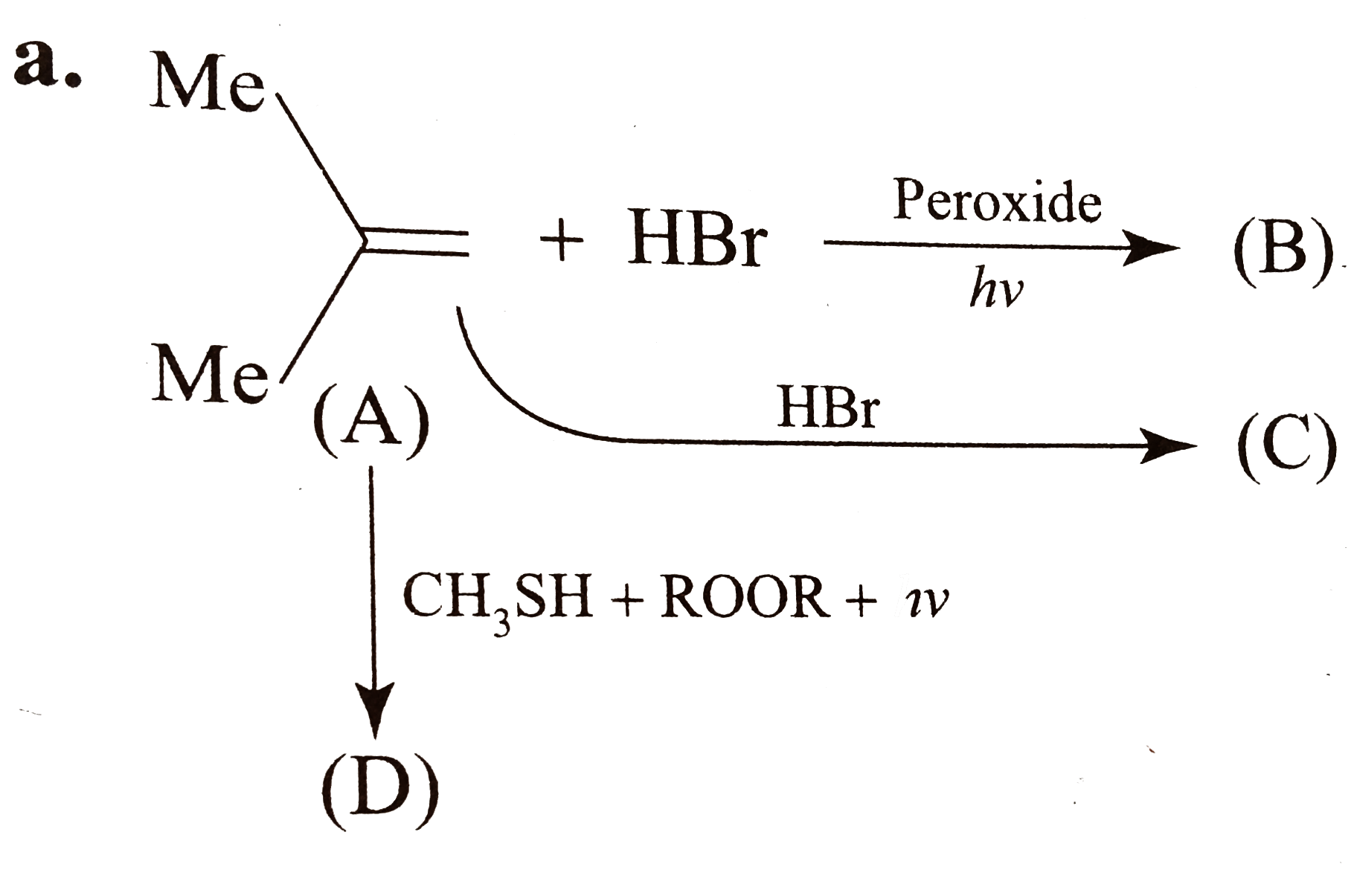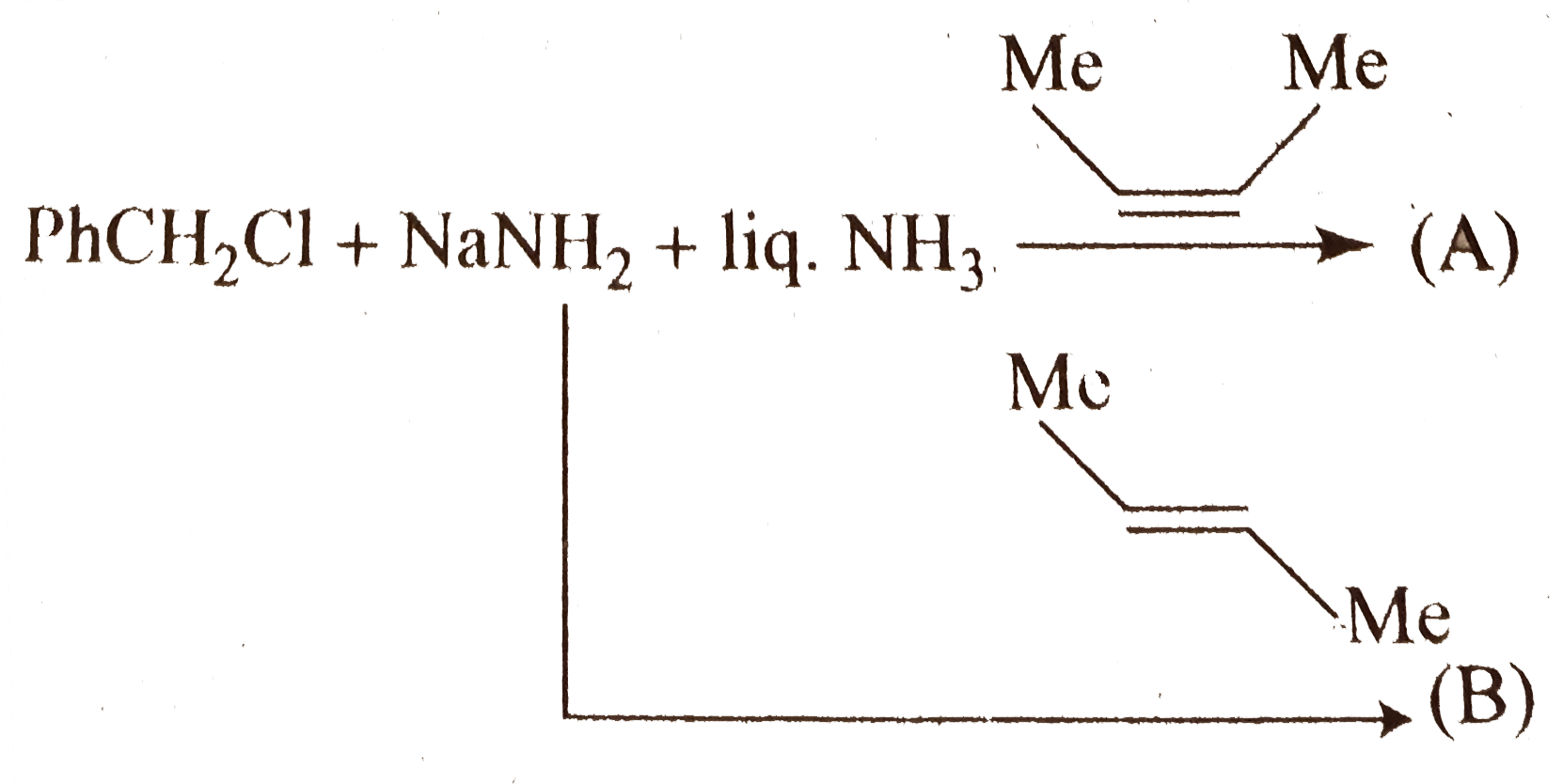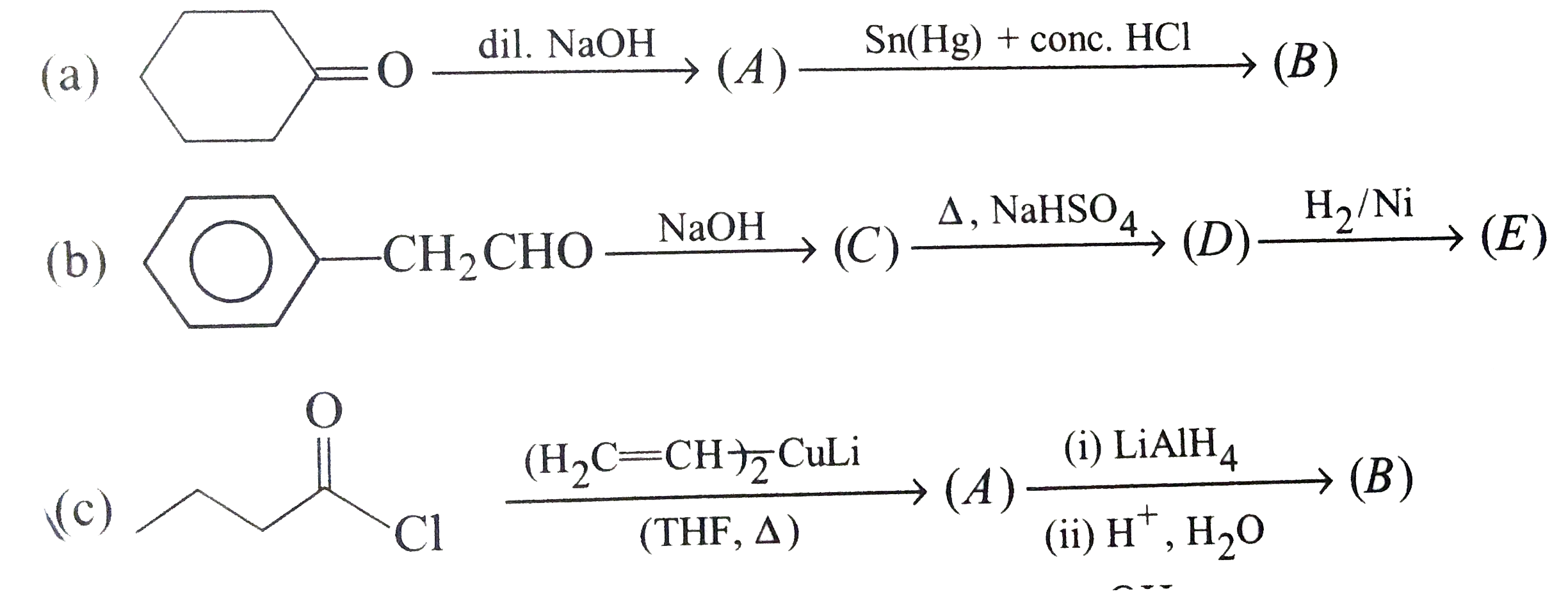The particle A is converted to C via following reactions then
A→B+2He4,B→C+2−1e0
A and C are isobars
A and C are isotopes
A and B are isobars
A and B are isotopes
The correct Answer is:B
To solve the problem of particle A converting to C through the given reactions, we will analyze the reactions step by step, focusing on the conservation of charge and atomic mass.
Step 1: Analyze the first reaction
The first reaction is:
A→B+242He
Here, particle A is converting into particle B and emitting two alpha particles (42He).
- Mass Number Conservation:
Let the mass number of particle A be AA and that of B be AB. Each alpha particle has a mass number of 4. Therefore, the mass number conservation gives us:
AA=AB+2×4
AA=AB+8
- Charge Conservation:
Let the atomic number of particle A be ZA and that of B be ZB. Each alpha particle has a charge of +2. Therefore, the charge conservation gives us:
ZA=ZB+2×2
ZA=ZB+4
Step 2: Analyze the second reaction
The second reaction is:
B→C+2e−
In this reaction, particle B is converting into particle C and emitting two electrons.
- Mass Number Conservation:
The mass number of C, denoted as AC, must be equal to that of B since electrons have negligible mass:
AB=AC
- Charge Conservation:
The charge of particle C must account for the loss of two electrons (each with a charge of -1):
ZB=ZC+2
Step 3: Combine the equations
From the first reaction, we have:
1. AA=AB+8
2. ZA=ZB+4
From the second reaction, we have:
3. AB=AC
4. ZB=ZC+2
Substituting AB from equation 3 into equation 1 gives:
AA=AC+8
Substituting ZB from equation 4 into equation 2 gives:
ZA=(ZC+2)+4
ZA=ZC+6
Step 4: Conclusion
From the above equations, we can summarize:
- The mass number of C is AC=AA−8.
- The atomic number of C is ZC=ZA−6.
Since both A and C have the same atomic number Z (as they are isotopes), we conclude that A and C are isotopes of each other.
The first reaction is:
A→B+242He
Let the mass number of particle A be AA and that of B be AB. Each alpha particle has a mass number of 4. Therefore, the mass number conservation gives us:
AA=AB+2×4
AA=AB+8
Let the atomic number of particle A be ZA and that of B be ZB. Each alpha particle has a charge of +2. Therefore, the charge conservation gives us:
ZA=ZB+2×2
ZA=ZB+4
The second reaction is:
B→C+2e−
The mass number of C, denoted as AC, must be equal to that of B since electrons have negligible mass:
AB=AC
The charge of particle C must account for the loss of two electrons (each with a charge of -1):
ZB=ZC+2
From the first reaction, we have:
1. AA=AB+8
2. ZA=ZB+4
3. AB=AC
4. ZB=ZC+2
AA=AC+8
ZA=(ZC+2)+4
ZA=ZC+6
From the above equations, we can summarize:
- The mass number of C is AC=AA−8.
- The atomic number of C is ZC=ZA−6.
Topper's Solved these Questions
- NUCLEI BOOK - NARAYNACHAPTER - NUCLEI EXERCISE - EXERCISE-1 (C.W)
21 Videos
- NUCLEI BOOK - NARAYNACHAPTER - NUCLEI EXERCISE - EXERCISE-1(H.W)
16 Videos
- NUCLEI BOOK - NARAYNACHAPTER - NUCLEI EXERCISE - EVALUATE YOURSELF-3
7 Videos
- NUCLEAR PHYSICSBOOK - NARAYNACHAPTER - NUCLEAR PHYSICSEXERCISE - LEVEL-II-(H.W)
9 Videos
- RAY OPTICS AND OPTICAL INSTRAUMENTS BOOK - NARAYNACHAPTER - RAY OPTICS AND OPTICAL INSTRAUMENTS EXERCISE - EXERCISE- 4 One or more than one correct answer type
13 Videos
Similar Questions
Compete the following reactions:
a.
b.
c.
d.
e.
View SolutionComplete the following reactions:
a.
b.
c.
d.
e.
View SolutionComplete the following reactions :
a.
b.
c.
d.
e.
View SolutionComplete the following reactions :
a.
b.
c.
d.
e.
View SolutionIdentify (A),(B),(C),(D), and (E), in the following reactions :

View SolutionIdentify (A), (B), ( C ), (D) and (E) in the following reactions :

View SolutionWhat should come next in the following letter series ?
A A B A B C A B C D A B C D E A B C D E F A B C D E F ?
1) A
2) H
3) G
4) I
5) None of these
View SolutionWhat should come next in the following letter series ?
H G F E D C B A H G F E D C B A H G F E D C B A H ?
1) G
2) E
3) A
4) I
5) None of these
View SolutionWhat should come next in the following letter series ?
H G F E D C B A G F E D C B A F E D C B A ?
1) E
2) G
3) F
4) B
5) None of these
View SolutionWhat should come next in the following letter sequence ?
A B C D E F G H A B C D E F G A B C D E F ?
1) H
2) G
3) A
4) I
5) None of these
View Solution